What’s that you ask? “Tame Feathers, do owls eat rabbits?”. I am glad you asked! Because now you get to enjoy some fun and interesting facts (and videos!).
But to answer your question, YES… owls hunt and eat rabbits!
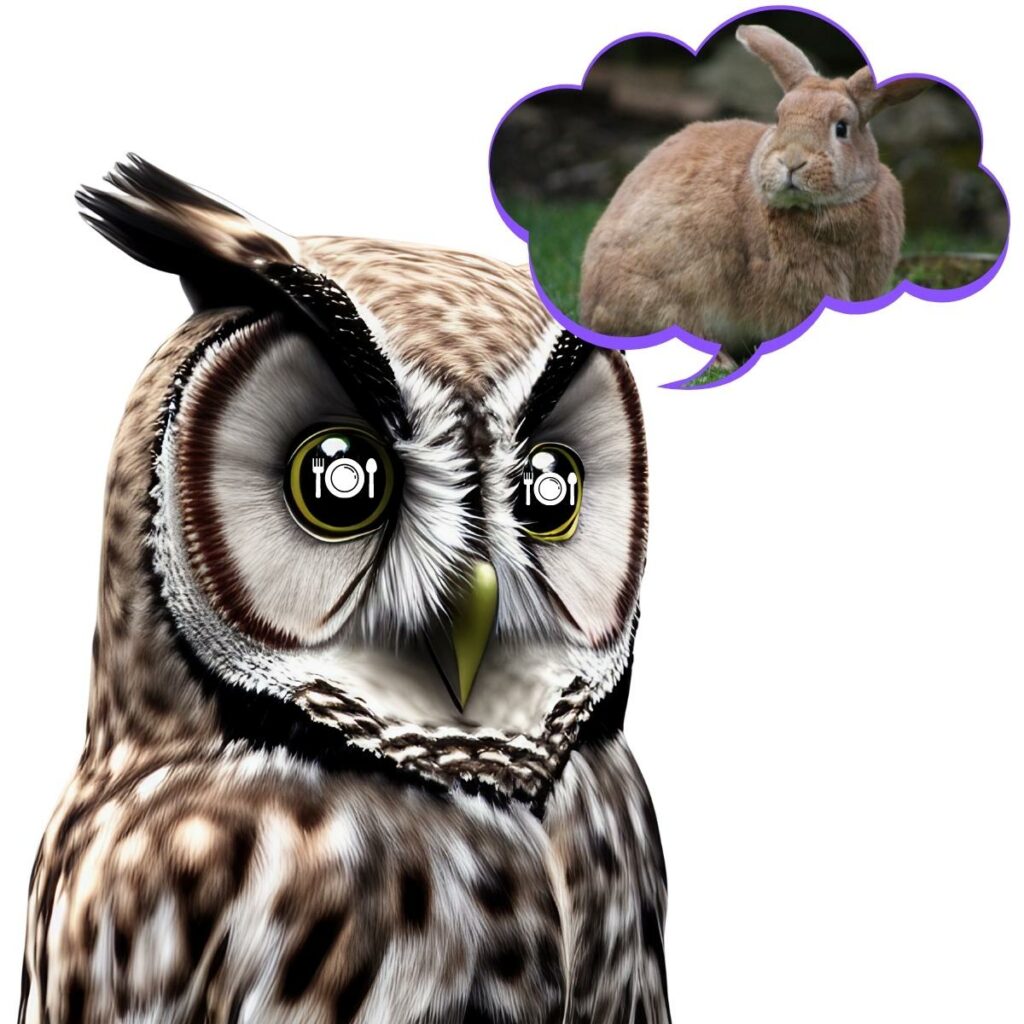
So, if you have any fury friends that match that description, keep them far away from any areas these prey might be lurking…
You’ve been warned!
But, in its own morbid way, it is a fascinating process to watch!
In this blog post, we will take a look at owl behavior and how they catch their prey. We will also include some videos of owls hunting and eating rabbits so you can see it for yourself. Stay tuned – it’s sure to be an interesting read!
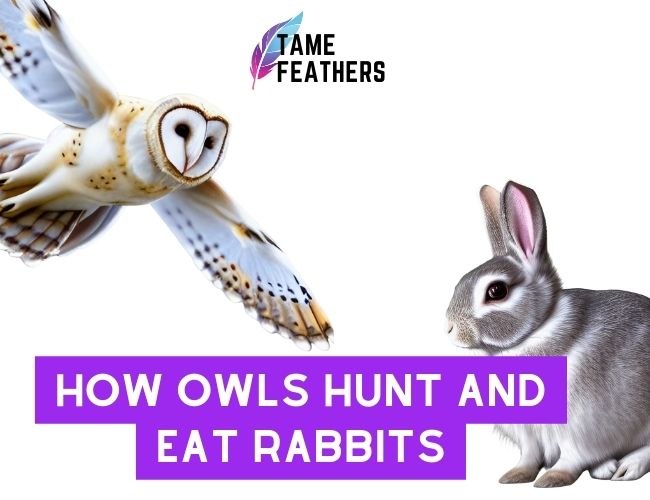
How Owls Hunt Wild Rabbits
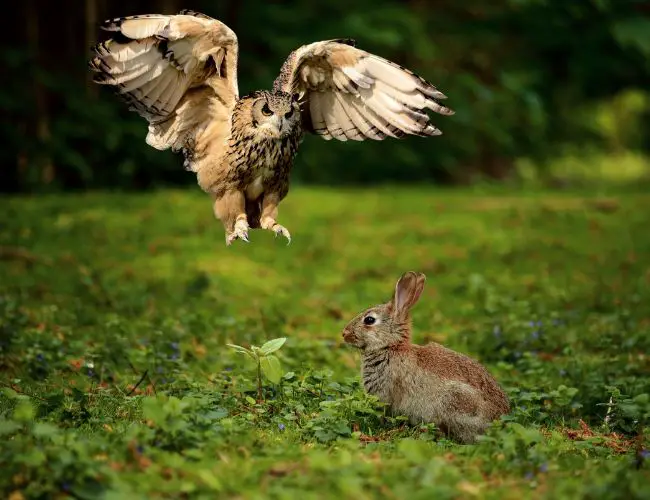
Owls are predators. And, one of the most common owl prey items is the wild rabbit. The owl swoops down on the unsuspecting rabbit, sinking its sharp talons into the fur and flesh.
The owl then lifts the rabbit into the air and carries it back to its perch, where it proceeds to tear it apart with its beak.
Owls typically eat the head and internal organs first, before moving on to the meatier parts of the rabbit.
While owls will hunt other small mammals, such as rodents and squirrels, rabbits are by far their most preferred prey.
As a result, owls can have a significant impact on local rabbit populations.
Top Videos Of Owls Eating Rabbits!
Barn Owl Eats Rabbit Whole (VIDEO)
Yes. As you can see, owls can eat rabbits whole. How do they do this so easily? Well, let’s take a closer look at owl anatomy.
Owls have very sharp talons that they use to grip their prey. They also have powerful beaks that can crush bone.
This allows them to eat their prey whole, which is how they typically eat rabbits.
While it might seem like owls just swoop down and grab their prey, it’s actually a bit more complicated than that.
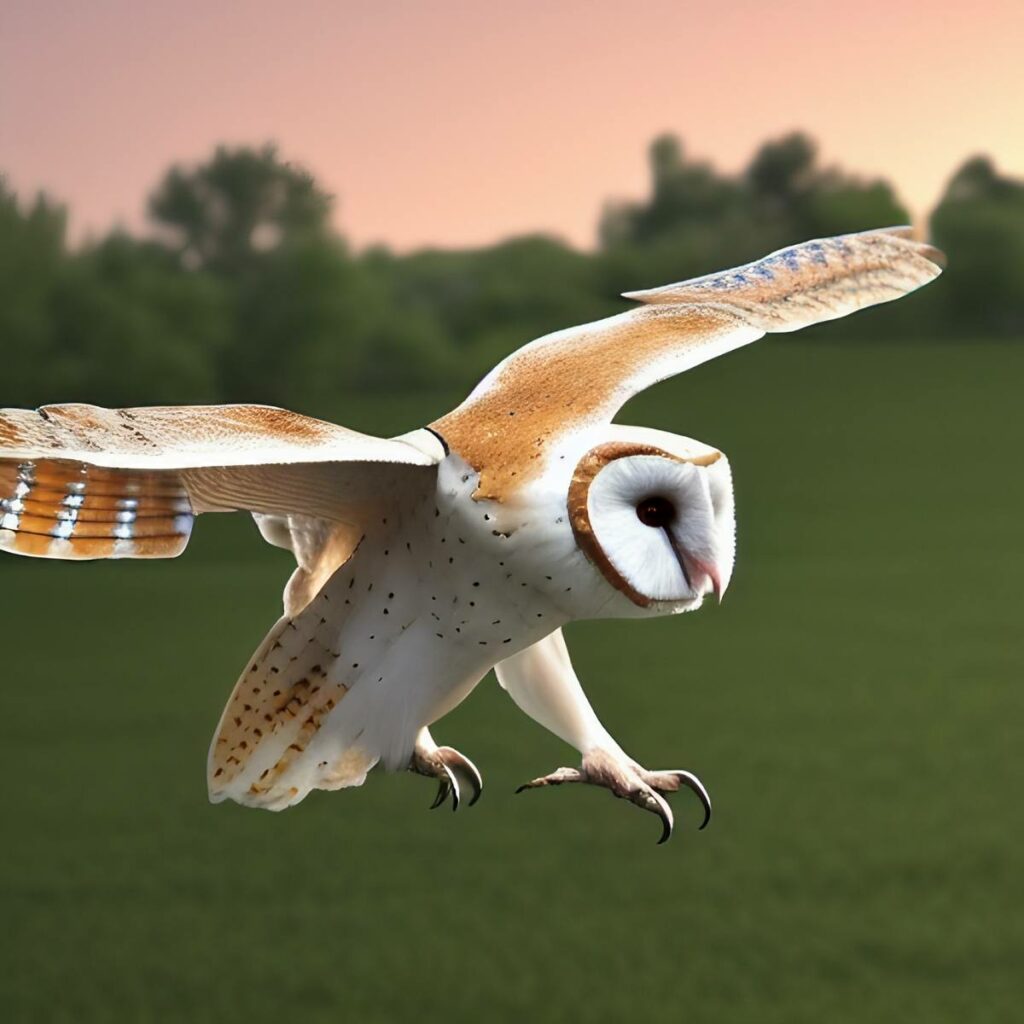
Owls are very stealthy hunters and they use their silent flight to help them sneak up on their prey.
Owls will often perch in a tree or on a branch and wait for an animal to walk by. When they see their prey, they will swoop down and grab it with their talons.
Owls typically eat small mammals like mice and shrews, but they will also eat larger prey like rabbits.
Rabbits are a favorite food of owls because they are relatively easy to catch, and they provide a lot of food.
Owl Attacking A Rabbit In The Wild (VIDEO)
In the wild, a rabbit will try its best to fight for its life when an owl attempts to hunt it. However, the owl is a very skilled hunter and usually prevails in the end.
This video shows an owl attacking a rabbit in the wild. The owl first attempts to grab the rabbit with its talons, but the rabbit is able to escape.
The owl then chases the rabbit and is finally able to catch it.
The resistance displayed by the rabbit is simply the rabbit in survival mode, trying to do whatever it can to avoid becoming the owl’s dinner.
Great Horned Owl Eating a Rabbit (VIDEO)
When hunting for rabbits, great horned owls are one of the most effective predators out there.
These majestic birds have massive wingspans and razor-sharp talons, allowing them to swiftly and silently swoop down on their prey. After making its kill, an owl will typically eat its meal on the spot.
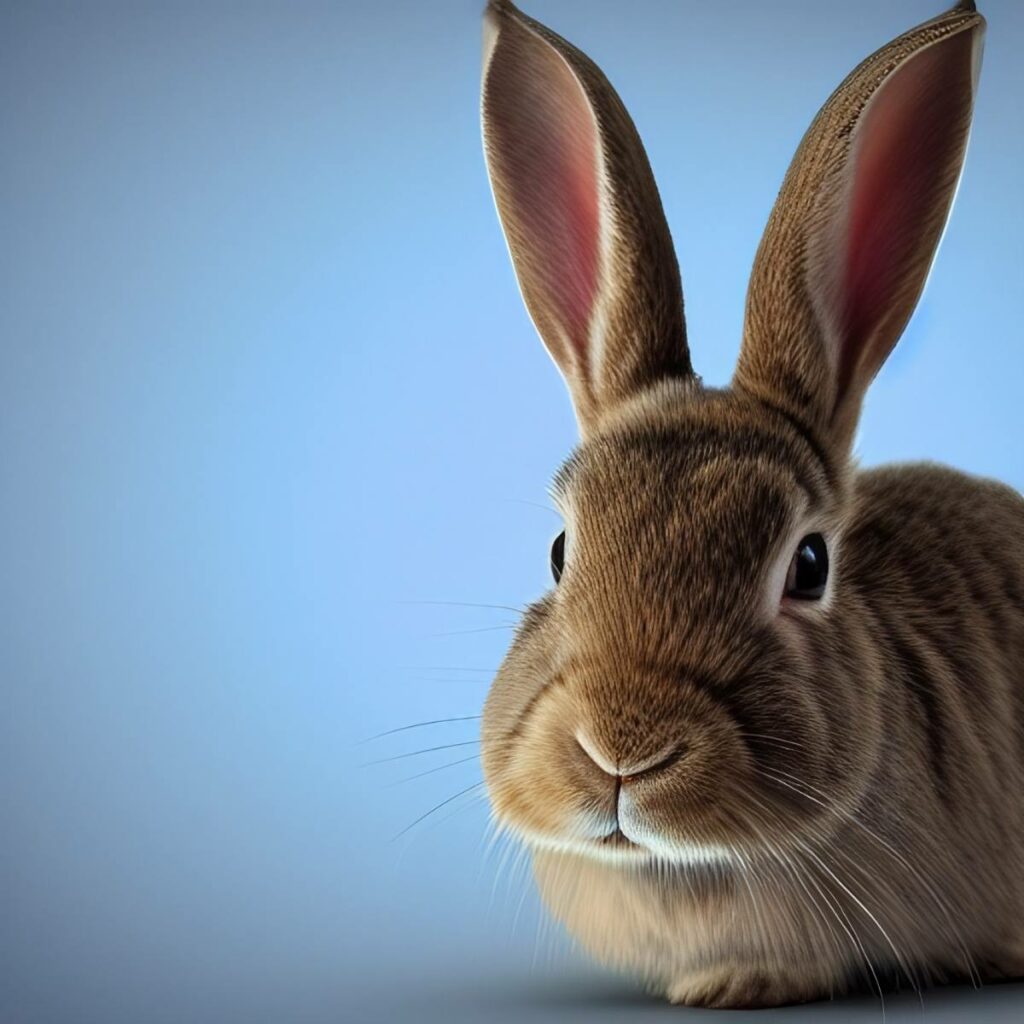
Given that a great horned owl can easily take down a rabbit, this means that these creatures form a crucial part of the owl’s diet.
In fact, it has been observed that owl populations actually tend to increase when rabbit populations decline.
How Owls In The Wild Eat Rabbits (VIDEO)
Most owls in the wild hunt for their food at night, when it is easier for them to see and capture prey. Owls typically eat small mammals, such as rodents or rabbits. To catch their prey, owls use their sharp talons to grab the animal and then kill it with a swift bite to the neck.
They will then either swallow their prey whole or tear it into smaller pieces before eating. Certain owl species also eat reptiles, fish, amphibians, and insects.
Some larger owl species, such as the great horned owl, will even hunt for small deer or other birds. Diet varies depending on the specific owl species and what food is available in its habitat.
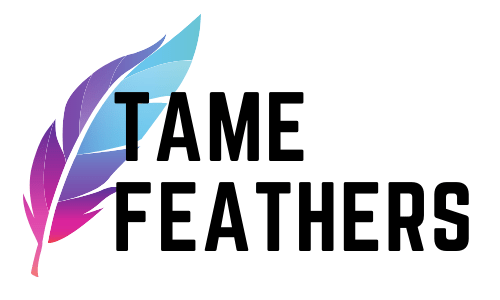
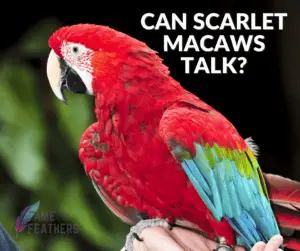
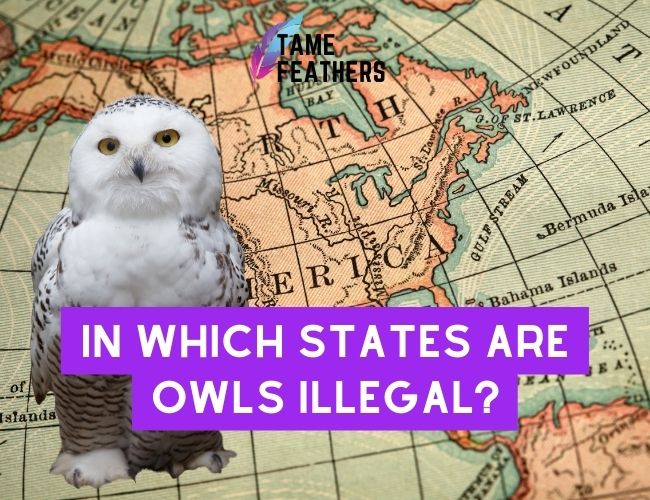
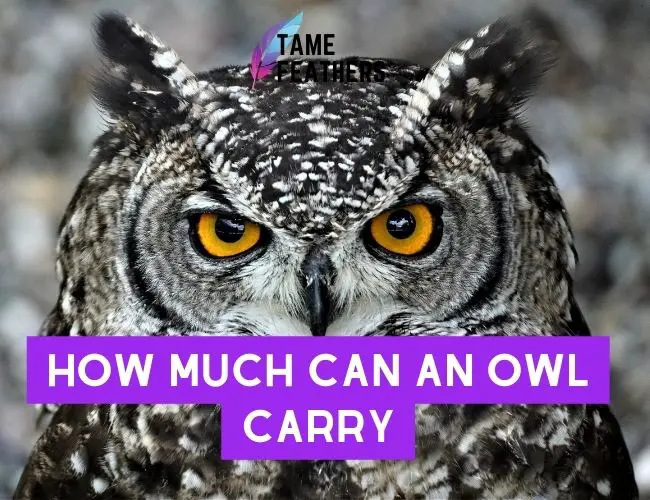
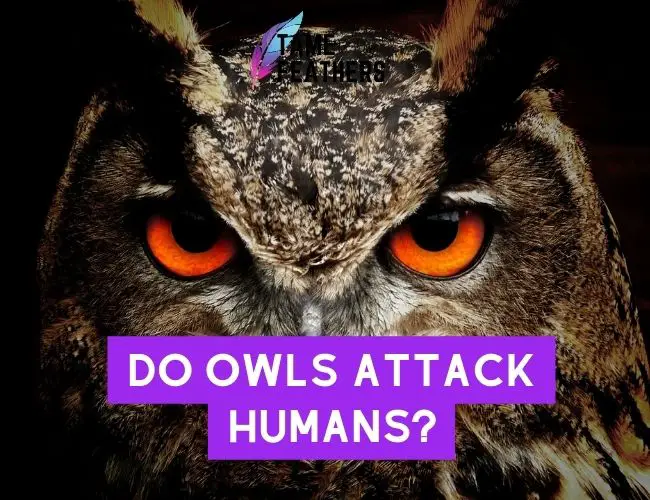

Hey there superb blog! Does running a blog like this take
a lot of work? I have very little knowledge of coding however
I had been hoping to start my own blog in the near future.
Anyway, if you have any suggestions or tips for new blog owners please share.
I know this is off topic nevertheless I simply had to
ask. Appreciate it! miradora.top
Heya this is somewhat of off topic but I was wondering
if blogs use WYSIWYG editors or if you have to manually code with HTML.
I’m starting a blog soon but have no coding knowledge so I wanted to get guidance from
someone with experience. Any help would be greatly appreciated!
miradora.top
A compatibilidade do software de rastreamento móvel é muito boa e é compatível com quase todos os dispositivos Android e iOS. Depois de instalar o software de rastreamento no telefone de destino, você pode ver o histórico de chamadas do telefone, mensagens de conversa, fotos, vídeos, rastrear a localização GPS do dispositivo, ligar o microfone do telefone e registrar a localização ao redor.
You can definitely see your enthusiasm within the work you
write. The arena hopes for more passionate writers such as you who are not afraid to mention how
they believe. Always follow your heart. I saw similar here: ecommerce and
also here: sklep online
Desde que haja uma rede, a gravação remota em tempo real pode ser realizada sem instalação de hardware especial.
great publish, very informative. I wonder why the other
specialists of this sector don’t realize this. You should proceed
your writing. I’m confident, you have a huge
readers’ base already! I saw similar here: sklep internetowy
and also here: dobry sklep
Wow, marvelous weblog format! How long have you been running a blog for?
you made blogging glance easy. The whole look of your
website is excellent, let alone the content! You can see similar:
sklep online and here ecommerce
Wow, superb blog format! How lengthy have you been running a blog for?
you made running a blog glance easy. The entire look of
your website is magnificent, let alone the content! You can see similar: najlepszy sklep and here sklep online
Heya i’m for the first time here. I found this board and I to find It truly useful & it helped me out a
lot. I’m hoping to offer one thing back and
aid others like you aided me. I saw similar here: sklep online and also here:
najlepszy sklep
Hmm is anyone else having problems with the pictures on this
blog loading? I’m trying to figure out if its a problem on my end or if it’s
the blog. Any feed-back would be greatly appreciated.
I saw similar here: Ecommerce
Hi there! Do you know if they make any plugins to help with SEO?
I’m trying to get my blog to rank for some targeted keywords
but I’m not seeing very good results. If you know of any please share.
Thanks! You can read similar text here: Dobry sklep
Howdy! Do you know if they make any plugins to assist with Search Engine Optimization?
I’m trying to get my blog to rank for some targeted keywords but I’m not seeing very good success.
If you know of any please share. Many thanks! You can read similar article here: Dobry sklep
Hi! Do you know if they make any plugins to assist with SEO?
I’m trying to get my blog to rank for some targeted keywords but I’m not seeing very good results.
If you know of any please share. Appreciate it!
You can read similar text here: Sklep internetowy
Hey there! Do you know if they make any plugins to help with Search Engine Optimization? I’m trying to get my blog to rank for
some targeted keywords but I’m not seeing very good results.
If you know of any please share. Appreciate it! You can read similar art here: Ecommerce
Hello! Do you know if they make any plugins to help with Search Engine Optimization? I’m
trying to get my blog to rank for some targeted keywords but I’m not seeing very
good results. If you know of any please share. Thank you!
You can read similar text here: Najlepszy sklep
Good day! Do you know if they make any plugins to help with Search
Engine Optimization? I’m trying to get my blog to rank for some targeted keywords
but I’m not seeing very good gains. If you know of any please share.
Cheers! You can read similar art here: List of Backlinks
Good day! Do you know if they make any plugins to help with SEO?
I’m trying to get my site to rank for some targeted keywords
but I’m not seeing very good results. If you know of any please share.
Cheers! I saw similar article here: Auto Approve List
Wow, incredible blog format! How lengthy have you been blogging for?
you make running a blog glance easy. The entire glance of your website is fantastic, as neatly as the content!
I read similar here prev next and that was wrote by
Abel75.
Wow, amazing blog layout! How lengthy have you been blogging for?
you make running a blog look easy. The total glance of your website is fantastic, as neatly as the
content material! You can read similar here prev next and those was wrote by Youlanda02.
Wow, incredible weblog structure! How long have you been blogging for?
you made blogging look easy. The total look of your site is magnificent, let alone the content material!
I read similar here prev next and that was wrote by Julieann97.
pharmacies in mexico that ship to usa [url=https://mexicoph24.life/#]Online Pharmacies in Mexico[/url] mexican pharmacy
lisinopril 80 mg daily [url=https://lisinopril.network/#]lisinopril 80 mg tablet[/url] how much is 30 lisinopril
cytotec pills buy online [url=http://cytotec.club/#]cytotec abortion pill[/url] п»їcytotec pills online
does tamoxifen cause menopause [url=http://nolvadex.life/#]tamoxifen blood clots[/url] does tamoxifen cause bone loss
nolvadex online [url=http://nolvadex.life/#]tamoxifen and antidepressants[/url] tamoxifen hot flashes
tamoxifen blood clots [url=https://nolvadex.life/#]tamoxifen medication[/url] tamoxifen benefits
buy propecia without rx [url=http://finasteride.store/#]buy cheap propecia no prescription[/url] buy propecia without dr prescription
buy cytotec over the counter [url=http://cytotec.club/#]п»їcytotec pills online[/url] cytotec pills buy online
cheap propecia price [url=https://finasteride.store/#]buying generic propecia without prescription[/url] cost of cheap propecia no prescription
ciprofloxacin 500 mg tablet price [url=http://ciprofloxacin.tech/#]buy cipro online[/url] ciprofloxacin
Cytotec 200mcg price [url=https://cytotec.club/#]cytotec buy online usa[/url] buy cytotec over the counter
cenforce for sale [url=https://cenforce.pro/#]Purchase Cenforce Online[/url] Purchase Cenforce Online
Buy Vardenafil 20mg [url=http://levitrav.store/#]buy Levitra over the counter[/url] Vardenafil online prescription
buy kamagra online usa [url=http://kamagra.win/#]kamagra.win[/url] Kamagra tablets
Buy generic Levitra online [url=http://levitrav.store/#]Levitra 20mg price[/url] Buy Vardenafil 20mg
buy kamagra online usa [url=http://kamagra.win/#]kamagra pills[/url] buy Kamagra
india online pharmacy [url=https://pharmindia.online/#]india pharmacy mail order[/url] mail order pharmacy india
safe canadian pharmacy [url=https://pharmcanada.shop/#]canadian pharmacy online store[/url] canadian pharmacy ltd
buy prescription drugs from india [url=https://pharmindia.online/#]reputable indian pharmacies[/url] world pharmacy india
buy prescription drugs from india [url=http://pharmindia.online/#]indian pharmacy paypal[/url] india pharmacy
buy canadian drugs [url=http://pharmcanada.shop/#]canadian pharmacy prices[/url] pharmacies in canada that ship to the us
amoxicillin 750 mg price [url=https://amoxila.pro/#]amoxicillin 500 mg where to buy[/url] generic for amoxicillin
buy zithromax 500mg online [url=https://zithromaxa.store/#]zithromax 250mg[/url] can i buy zithromax over the counter in canada
neurontin 100 mg cost [url=https://gabapentinneurontin.pro/#]neurontin 400 mg cost[/url] neurontin cream
zithromax 500 mg lowest price online [url=http://zithromaxa.store/#]order zithromax over the counter[/url] generic zithromax india
doxycycline without prescription [url=https://doxycyclinea.online/#]buy doxycycline online without prescription[/url] doxycycline medication
neurontin 4000 mg [url=http://gabapentinneurontin.pro/#]neurontin pills[/url] neurontin 300 mg price in india
cheap doxycycline online [url=http://doxycyclinea.online/#]doxycycline order online[/url] 200 mg doxycycline
neurontin gabapentin [url=https://gabapentinneurontin.pro/#]neurontin generic brand[/url] neurontin cream
neurontin 300mg tablet cost [url=https://gabapentinneurontin.pro/#]neurontin 800[/url] neurontin 100mg caps
zithromax prescription online [url=https://zithromaxa.store/#]zithromax purchase online[/url] zithromax antibiotic without prescription
buying from online mexican pharmacy [url=https://mexicanpharmacy1st.com/#]buying from online mexican pharmacy[/url] mexico pharmacy
mexican rx online [url=https://mexicanpharmacy1st.shop/#]п»їbest mexican online pharmacies[/url] medication from mexico pharmacy
best online pharmacies in mexico [url=https://mexicanpharmacy1st.online/#]п»їbest mexican online pharmacies[/url] buying from online mexican pharmacy
purple pharmacy mexico price list [url=http://mexicanpharmacy1st.com/#]purple pharmacy mexico price list[/url] mexican online pharmacies prescription drugs
buying prescription drugs in mexico [url=https://mexicanpharmacy1st.online/#]mexican rx online[/url] п»їbest mexican online pharmacies
neurontin 10 mg [url=http://gabapentin.club/#]discount neurontin[/url] neurontin capsules 300mg
propecia generics [url=http://propeciaf.online/#]generic propecia[/url] cheap propecia online
buy generic propecia [url=https://propeciaf.online/#]cost of propecia pills[/url] buy propecia without prescription
neurontin 800 mg tablet [url=http://gabapentin.club/#]neurontin 2400 mg[/url] neurontin brand coupon
zestril 5mg price in india [url=https://lisinopril.club/#]cost of lisinopril 2.5 mg[/url] lisinopril 5mg buy
buy cytotec pills [url=http://cytotec.xyz/#]Cytotec 200mcg price[/url] buy cytotec over the counter
cheapest pharmacy to fill prescriptions with insurance [url=http://36and6health.com/#]36and6health[/url] pharmacy discount coupons
prescription from canada [url=https://cheapestandfast.com/#]discount prescription drugs canada[/url] canadian pharmacy no prescription
indianpharmacy com [url=https://cheapestindia.com/#]indian pharmacy[/url] top online pharmacy india
pharmacies en ligne certifiГ©es [url=https://eumedicamentenligne.shop/#]pharmacie en ligne france pas cher[/url] п»їpharmacie en ligne france
farmacia online 24 horas [url=https://eufarmaciaonline.com/#]farmacias online seguras[/url] farmacias online seguras
vente de mГ©dicament en ligne [url=http://eumedicamentenligne.com/#]pharmacie en ligne france livraison internationale[/url] pharmacie en ligne avec ordonnance
pharmacie en ligne france pas cher [url=https://eumedicamentenligne.shop/#]pharmacie en ligne fiable[/url] pharmacie en ligne
Outstanding feature
vente de mГ©dicament en ligne [url=https://eumedicamentenligne.com/#]п»їpharmacie en ligne france[/url] Pharmacie Internationale en ligne
europa apotheke [url=https://euapothekeohnerezept.shop/#]п»їshop apotheke gutschein[/url] medikamente rezeptfrei
pharmacie en ligne france pas cher [url=https://eumedicamentenligne.shop/#]Pharmacie sans ordonnance[/url] vente de mГ©dicament en ligne
Hello.
This post was created with XRumer 23 StrongAI.
Good luck 🙂
Hello!
This post was created with XRumer 23 StrongAI.
Good luck 🙂